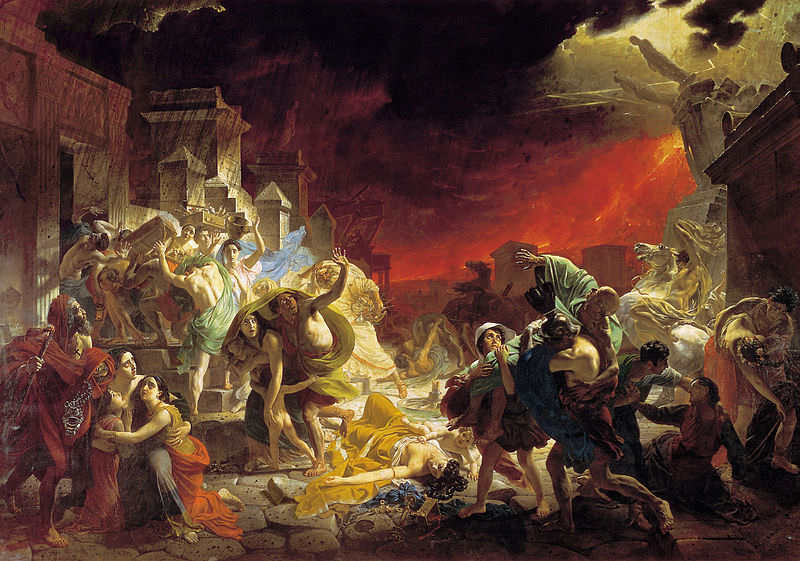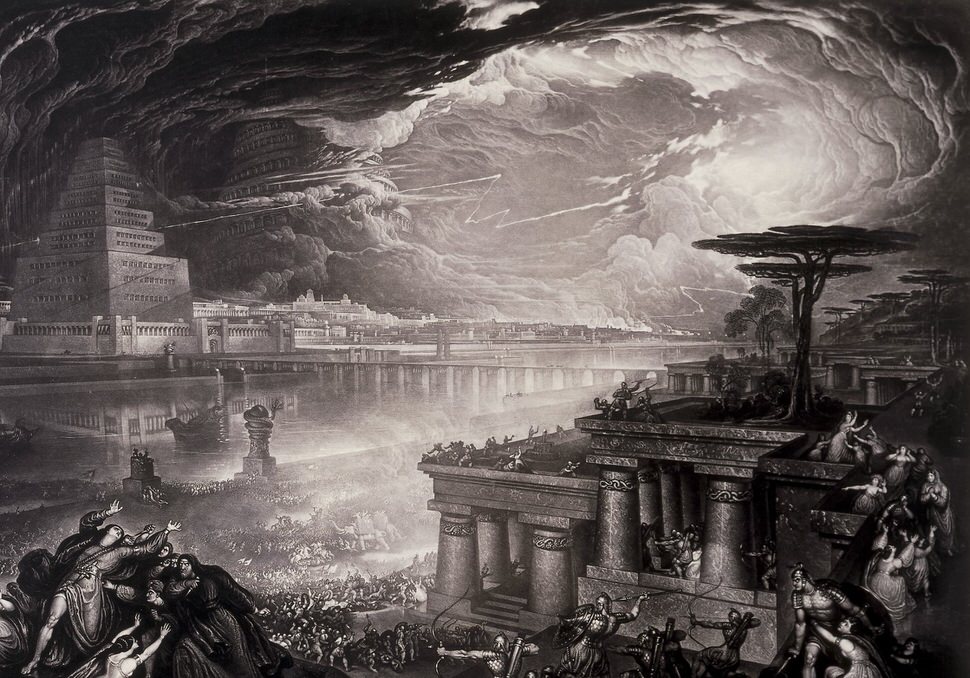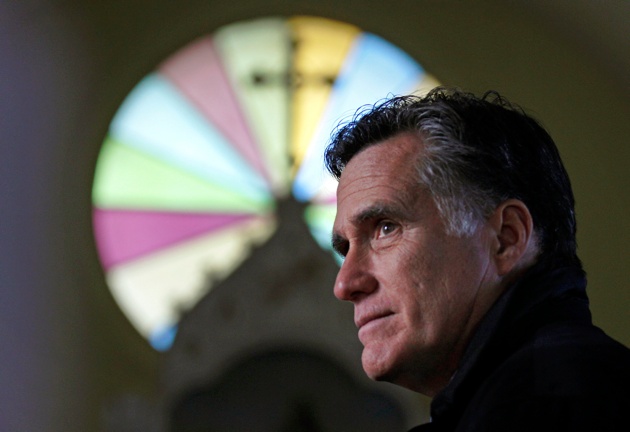A year before the Cuban missile crisis took the world to the brink Robert Lowell wrote his apocalyptic poem, “Fall 1961”:
Back and forth, back and forth
goes the tock, tock, tock
of the orange, bland, ambassadorial
face of the moon
on the grandfather clock.All autumn, the chafe and jar of nuclear war;
we have talked our extinction to death.
Yet Armageddon didn’t happen then and Lowell’s anxiety seems almost pedestrian when compared with the uncanny instinct of Thomas Merton, the poet turned Trappist monk. In 1947, more than half a century before the catastrophe of 9/11 Merton asked in his poem “Figures for an Apocalpyse,”
How are they down, how have they fallen down
Those great strong towers of ice and steel,
And melted by what terror and what miracle?
What fires and lights tore down,
With the white anger of their sudden accusation,
Those towers of silver and of steel?
The idea of impending doom, whether divinely ordained or inferred by creative imaginations in the wake of absent deities, is a recurring theme not only in the work of writers such as Yeats, Eliot and Beckett. Imagining—or predicting—the end of the world has been the stuff of popular culture from the doomsday panoramas of the English artist John Martin (1789-1853) to the events of the “Rapture” described in the Left Behind series of novels by Tim F. LaHaye and Jerry B. Jenkins. In recent years, apocalyptic rhetoric has turned up in international politics among terrorists and hard-line governments such as Iran, but also their adversaries in Washington, Israel, and elsewhere including the current Republican candidate for president.
Perhaps this should not surprise us. Apocalyptic movements have been motors of religious—and secular—change throughout history. The origins of Christianity are inseparable from the apocalyptic spirit that consumed the Judeo-Hellenistic world in late antiquity. Albert Schweitzer in his highly influential The Quest of the Historical Jesus (1906), saw Jesus as the archetypical messianic prophet who expected to see the establishment of God’s rule on earth—as theologian John Riches puts it—through a “mighty act of divine intervention in history which would put an end to the evil age.” Muhammad’s original mission cannot be explained without reference to the apocalyptic admonitions, the foreseen calamities and terrors of the Day of Judgment described in the early suras (chapters) of the Koran “when mankind shall be like moths, besprinkled, when mountains shall be like tufts of wool…” [101:4-5]
Apocalyptic rumblings—to name a few examples—surrounded Luther’s call for reforming the Catholic Church, Sabbatai Zevi’s claim to be the Jewish messiah, the French and American Revolutions (with George III as the Antichrist of Revelation) and the Babist movement in Persia led by Sayyid ‘Ali al-Shirazi, known as the Bab or ”Gate” (1819-1850), who claimed to be the Hidden Imam of the Shi’a and a “manifestation” of God on a par with Jesus and Muhammad. Although Shirazi was executed—along with thousands of his followers—his movement eventually evolved into the separate faith of Bahaism.
Many such notions are also present in modern totalitarian movements. The most obvious example is Hitler’s thousand-year Reich. The historian Peter Fischer sees Nazism as a “synthesis of nationalist ideology and Apocalyptic Christian mythology” with the “warrior-dictator” leading “Germany to the Promised Land …once he has destroyed evil, sin and death in their earthly embodiment as the potent, satanic Jew.”
The inveterate appeal of such ideas, in literature, art, religion, and politics, was recently explored at a conference (audio available here) at Solstrand, near Bergen, Norway convened by two enterprising scholars, Erik Tonning and Matthew Feldman, with particular reference to the interaction of Nazi ideas with themes from Christianity and modernism.
The extent to which apocalyptic movements have attracted marginalized people at times of economic upheaval can be gleaned from the phenomenal success of the painter John Martin. During his lifetime his visions of biblical catastrophe were admired by many more people than the canvases of much more canonical painters such as Turner and Constable. Eight million people are said to have viewed his vast narrative paintings in halls specially hired for the purpose, while prints of his pictures hung in homes as far from London as New Zealand. But Martin, like other doomsday prophets, was also a visionary engineer: his projects for London sewers preceded those of Sir Joseph Bazalgette by a decade or more, while his plans for a London light railway anticipated the construction of the first urban railway, the Metropolitan Line, by more than thirty years.
The connection between destruction and renewal, between doom and prophetic hope, is also apparent in Martin’s paintings, with their strangely modernist architecture anticipating the actual or planned construction of similar structures by almost a century. Consider the massive buildings that loom in the backgrounds of Balshazzar’s Feast (1821) and The Fall of Babylon (1819, reproduced as a mezzotint in 1831) which are not unlike the Senate House of London University, an Art Deco tower between 1932 and 1937 designed by Charles Holden. Once London’s tallest building, its massive totalitarian look is said to have inspired Orwell’s Ministry of Truth in 1984. In turn, the fantastic neoclassical palace that commands the skyline in Joshua Commanding the Sun to Stand Still (1827) bears a striking resemblance to Albert Speer’s designs for Germania, capital of the world empire planned by Hitler.
Advertisement
The paradox of apocalypticism is that the prophets who predict the end of the world can also be great initiators and innovators. The fear of catastrophe, despite its perceived inevitability, acts as a spur to construction. A striking example is the evolution of the Mormon Church from a doomsday cult that originated in upstate New York during the 1830s to the formidable “kingdom” created in the Utah desert by the end of the nineteenth century. The sense of impending disaster inspired the Latter Day Saints, who saw themselves as a “saved remnant” of humanity, to congregate first at Kirtland, Ohio, then near modern Independence, Missouri, and eventually at Nauvoo, on the banks of the Mississippi in Illinois (where the movement’s founder Joseph Smith was assassinated in 1844), before the great migration across the Great Plains and Rockies under Smith’s successor Brigham Young.
The early Mormon experience can usefully be compared with that of early Islam: the persecution suffered by the Saints in Jackson County, Missouri, which they were forced to leave after being disarmed and flogged by slave-owning settlers, may be compared with that experienced by Muhammad’s first Muslim converts in Mecca, while the utopian community forged by Joseph Smith under divine guidance in Nauvoo corresponds to Muhammad’s reign in Medina. As the German historian Eduard Meyer noted in 1912:
Without the least exaggeration, we may designate the Mormons as the Mohammedans of the New World according to their origins and their manner of thinking. There is hardly a historical parallel which is so instructive as this one; and through comparative analysis both receive so much light that a scientific study of one through the other is indispensable.
Although Joseph Smith once briefly compared himself to Muhammad, his preferred identification was with the patriarchs of ancient Israel (who were polygamists, as he himself became). Like other Christian fundamentalists raised on literal interpretations of the Book of Revelation, he believed that the Savior’s return, although imminent, must be preceded by an era of doom and destruction leading to the “restoration” of Israel. But there was a difference. Other Christian Fundamentalists—known as premillennialists—identify Israel with the Jewish people (which is why Christian Zionists give wholehearted support to the Jewish state, including the contested settlements in the occupied territories).
In contrast, Smith’s followers came to see themselves as the true Israelites—a people that included not only the existing Jews, but the native Americans, descendants of ancient Hebrews who arrived in the New World in ancient times. Mormons believed that texts such as Isaiah 24:23 that speak of the Lord reigning in Zion and in Jerusalem clearly referred to two different places, with Zion (originally conceived to be Jackson County, Missouri) the site of the Second Coming on American soil. Early Mormon preachers insisted that the Book of Mormon, which Smith claimed to have “translated” from an ancient text given him by an angel, was to be the agency of Jewish conversion: after reading it, Jews would not fail to recognize Jesus as the True Messiah.
The LDS Church’s early commitment to Jewish conversion has caused it problems in Israel. When the church began building a branch of Brigham Young University on land on Mount Scopus taken from Jordan in the 1967 war, there were protests in the Knesset and demonstrations by Orthodox Jews who feared the church’s proselytizing agenda; they organized marches on City Hall and on the construction site. The protests were stilled, if not silenced, when the church issued a formal promise not to proselytize Jews and the branch, now called the BYU Jerusalem Center for Near Eastern Studies, was allowed to open. At the same time LDS officials made some reassuring adjustments of doctrine. The Tenth Article of Faith, which originally read: “we believe …that Zion will be built upon this American continent,” was amended to make it clear that Zion meant the American “new Jerusalem” rather than the old world city. Whereas for early Mormons conversion of the Jews was deemed the prerequisite for the Messiah’s return, the emphasis is now on the return of the Jewish people to their ancestral lands regardless of conversion.
Advertisement
This shift in doctrine clearly facilitates the cozy relationship between Mitt Romney, the first Mormon Saint ever to have a plausible shot at the US presidency, and his friend Israeli Prime Minister Benjamin Netanyahu. During his recent visit to Jerusalem Romney delighted his hosts by calling the disputed city Israel’s capital, although the US and most other countries refuse to do so. He also suggested that because of their own cultural background (rather than the Israeli occupation) the Palestinians were incapable of showing the same level of ”economic vitality” as Israelis. Netanyahu was equally warm, praising and hugging Romney, clearly indicating that he wants Romney to defeat Obama in November. As the Haaretz commentator Uri Misgav somewhat mischievously put it, the US-educated Netanyahu “doesn’t speak English or even American; he speaks fluent Republicanese.”
More alarming than “Republicanese,” however, may be the apocalyptic mindset both men share. Earlier this year Yuval Diskin, retiring director of Israel’s internal security service Shin Beit, criticized Netanyahu and his defense minister Ehud Barak for threatening military action against Iranian nuclear facilities, stating he had no faith in a leadership that makes decisions based on “messianic feelings.” His view that a strike on Iran could lead to disaster, which is shared by other security and defense chiefs, as well as Israel’s president Shimon Peres, gains urgency in view of recent reports aired on Israeli television that Netanyahu “is determined to attack Iran before the US elections.” In June, Romney, when questioned on US television about foreign policy, suggested—astonishingly—that an attack on Iran was a question of survival for the United States: “We cannot survive a course of action [that] would include a nuclear Iran. We must be willing to take any and all actions.” Though Mormons have retreated from the position that the Great Tribulation preceding return of Jesus is due any day, many still keep a year’s supply of food in their cellars—just in case.
The great English critic Frank Kermode thought that poets—unlike some politicians—were proof against enchantment by the dream or nightmare—of the apocalypse. Yeats’s apocalyptic beast that “slouches towards Bethlehem to be born” (in his 1920 poem “The Second Coming”) is safely wrapped in the allusive language of myth, contained by the broader frame of the poet’s “clerical skepticism.”
But Thomas Merton belonged to a generation that lived through real apocalypses brought about by political actors: Auschwitz, Hiroshima, and Vietnam. Mary Bryden, a specialist in modern literature, suggests that the recurrent apocalyptic motifs that surface in Merton’s writings reflect two somewhat contradictory notions of how the world might end: one emerging from religious expectation, and the other from a more plausible secular angst. In 1968, the year of his death (caused when an electric fan fell into his bathtub) he wrote in his diary that the news of the murder of Martin Luther King had pressed down upon him “like an animal, a beast of the apocalypse.”





